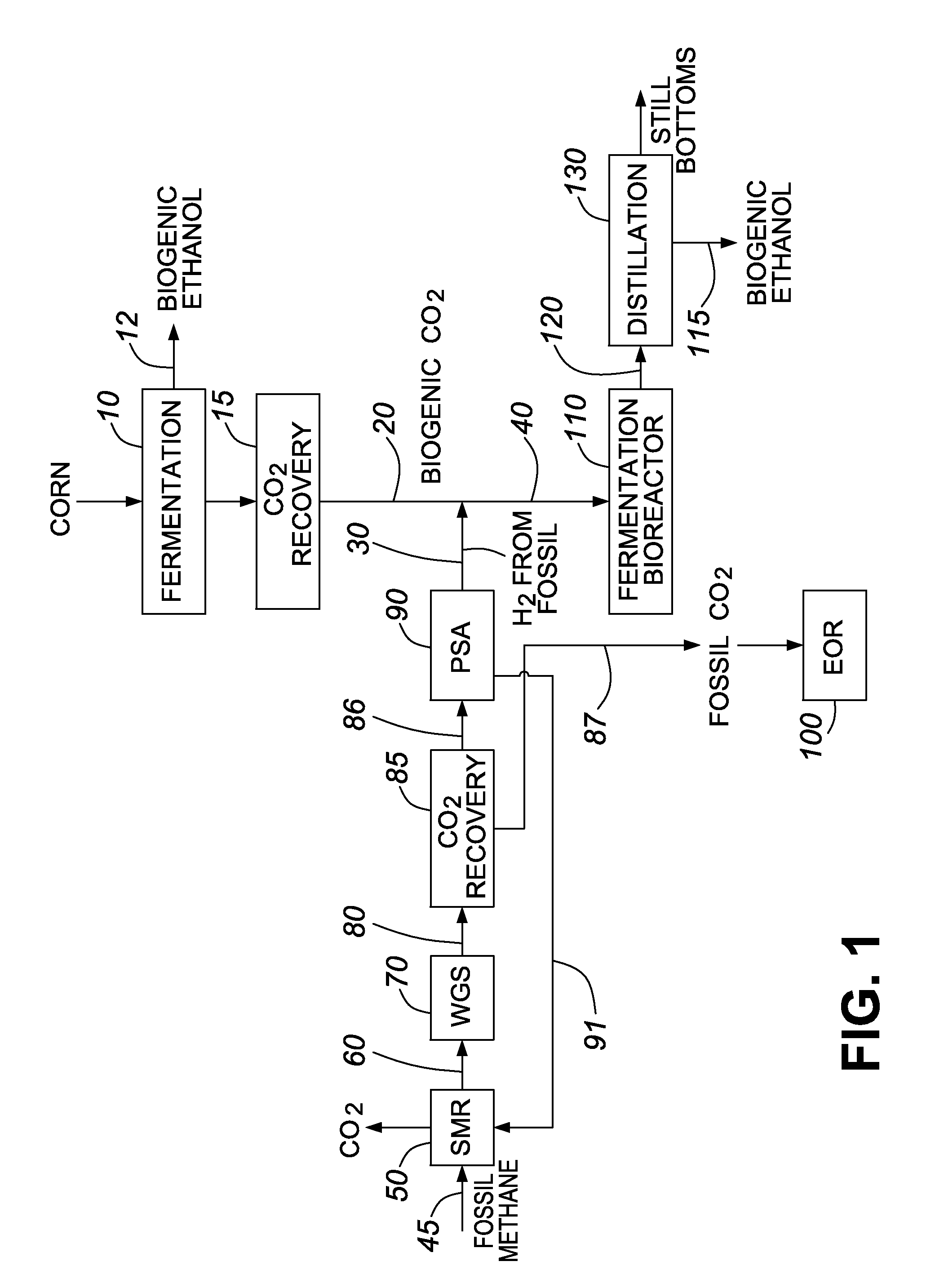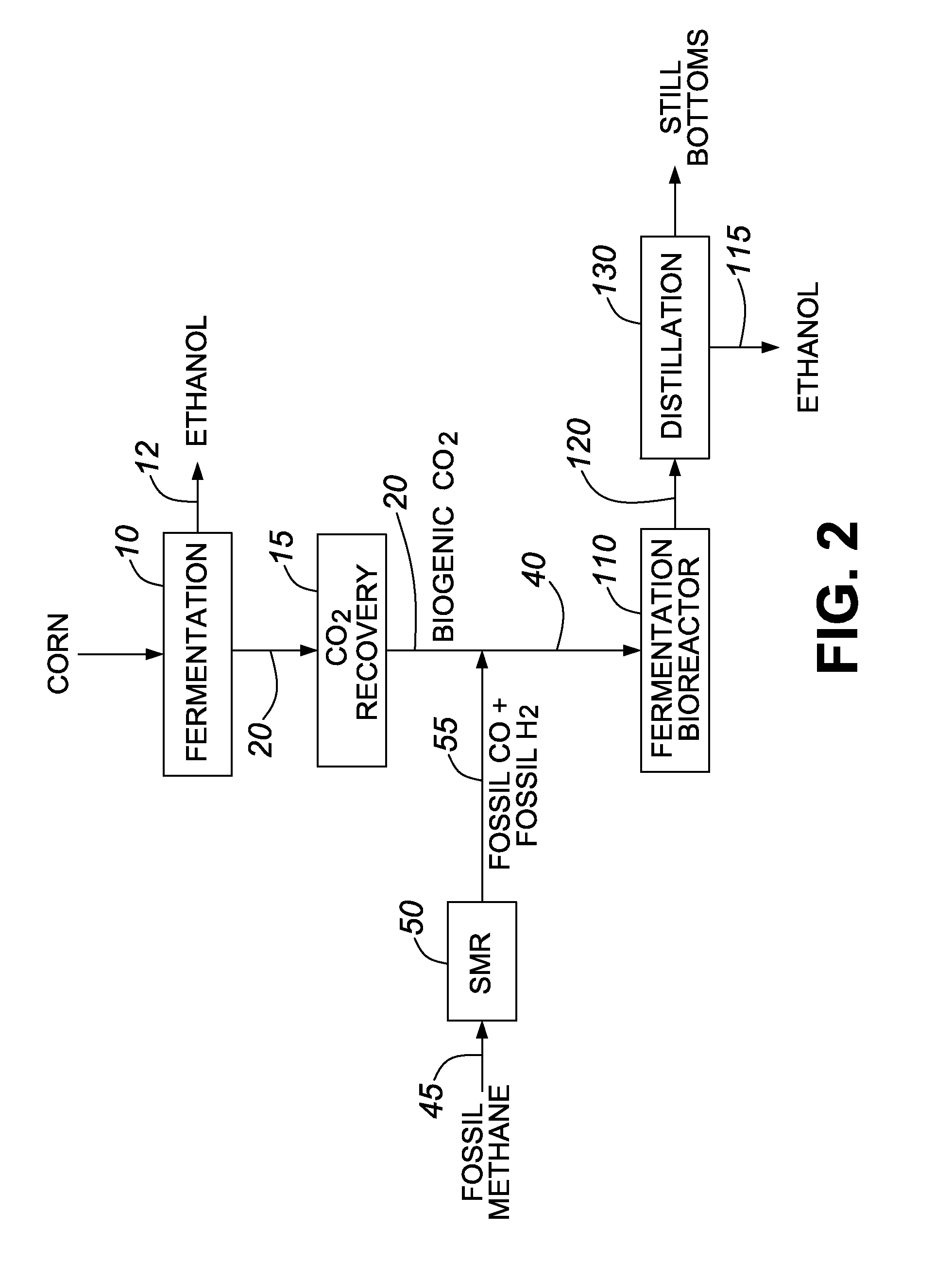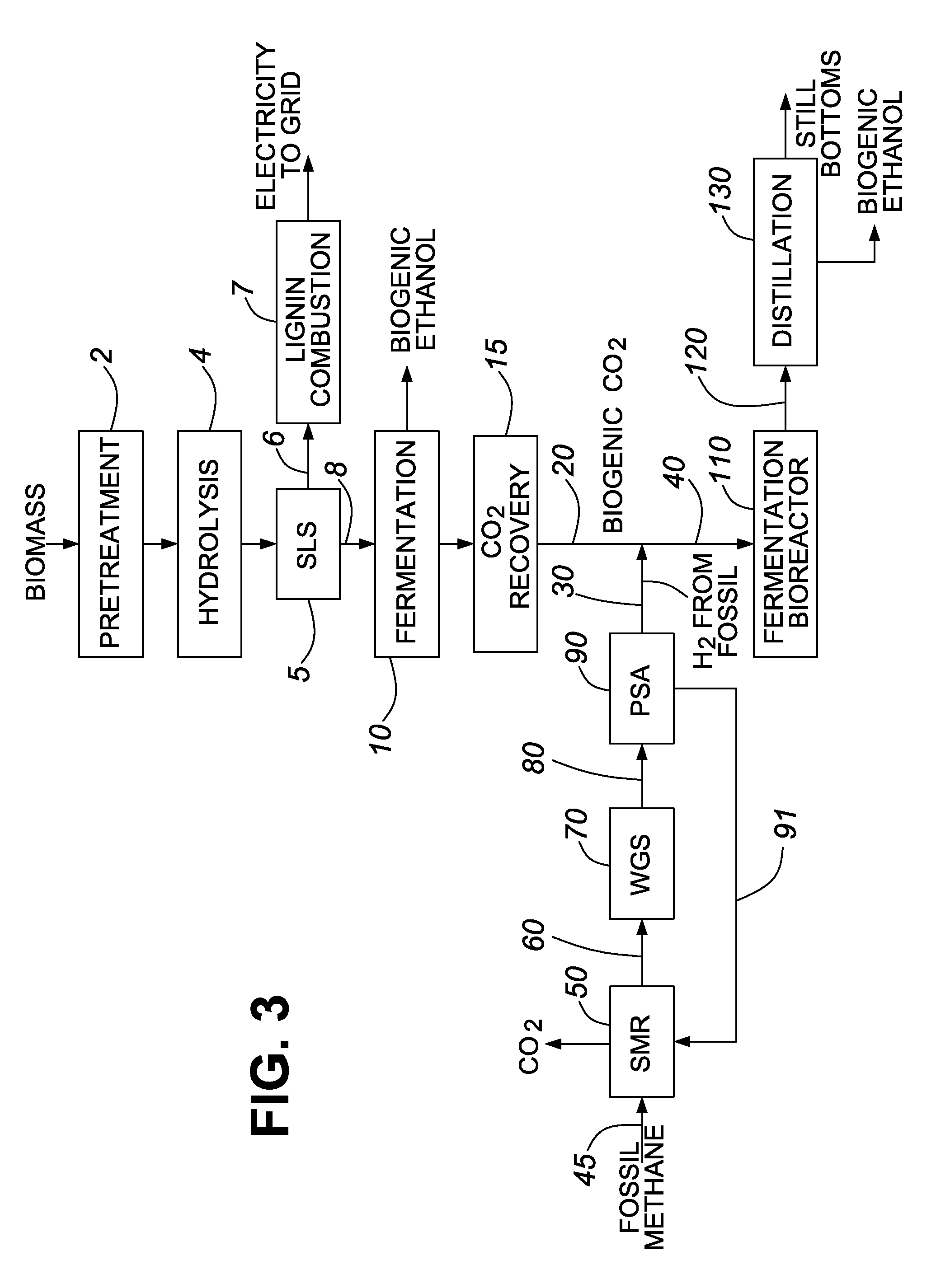Process for using biogenic carbon dioxide derived from non-fossil organic material
a technology of organic materials and carbon dioxide, which is applied in the field of process for using biogenic carbon dioxide derived from non-fossil organic materials, can solve the problems of reducing the ghg emission reduction associated with biofuel or biofuel intermediate, affecting the yield of biofuel, and often venting carbon dioxide, etc., so as to improve product yield, reduce cost, and low energy value
- Summary
- Abstract
- Description
- Claims
- Application Information
AI Technical Summary
Benefits of technology
Problems solved by technology
Method used
Image
Examples
example 1
Producing Biogenic Ethanol Using Fossil Derived Hydrogen and Biogenic Carbon Dioxide
[0225]In this example, biogenic carbon dioxide and fossil derived hydrogen are fed to a bioreactor and fermented to ethanol by Clostridium ljungdahlii bacteria that carry out the following bioconversion:
6H2+2CO2→CH3CH2OH+3H2O.
[0226]The hydrogen for the foregoing reaction is produced by a hydrogen production process using fossil methane as the feedstock. Fossil carbon dioxide produced from the hydrogen production that is otherwise vented is introduced underground to reduce life cycle GHG emissions. The process flow sheet is described below in relation to FIG. 1.
[0227]As shown in FIG. 1, corn is the feed to a dry milling process employing fermentation 10 to produce biogenic ethanol. The corn is first treated by grinding and enzyme treatment in a slurry. The resultant slurry is then fed to fermentation unit 10 and fermented with Saccharomyces cerevisiae yeast to produce ethanol and a biogenic CO2 stream...
example 2
Comparison of GHG Emission Calculations for a Process with a Water Gas Shift and Introduction of Fossil CO2 Underground Versus a Process without Such Steps
[0236]The life cycle GHG emissions of the process described in Example 1 and FIG. 1 relative to a gasoline baseline were calculated and are summarized in Table 4 below. The calculations show that by using the hydrogen enriched stream 30 produced by the hydrogen production process outlined in Example 1 in the above-described ethanol fermentation, and by introducing fossil carbon dioxide stream 87 from the hydrogen production underground to extract oil, the life cycle GHG emissions for the total ethanol produced can be reduced by 24% relative to a gasoline baseline.
[0237]
TABLE 4Summary of life cycle GHG emissions for ethanol produced using a hydrogen enriched stream and fossil CO2 introduction undergroundUsageEmission EmissionsBTU / galintensityfrom fuelethanolg CO2eq / mmBTUg CO2eq / mmBTUUnitsproducedfuel usedethanol producedNatural gas...
example 3
GHG Emission Calculations of an Embodiment Employing Displacement
[0256]In this example, life cycle GHG emissions were calculated for a process in which biogenic carbon dioxide is sourced from a fermentation conducted as part of a cellulosic ethanol conversion process. The biogenic carbon dioxide collected is combined with fossil derived hydrogen and fermented to produce biogenic ethanol as described previously in Example 1.
[0257]In the cellulosic ethanol conversion process, lignin is combusted to produce steam and electricity, for the cellulosic ethanol plant and the excess energy is sold to the electricity grid. The electricity derived from non-fossil organic material displaces the production or use of fossil derived electricity from a coal burning power plant.
[0258]The process flow diagram is shown in FIG. 3. Like reference numbers among FIGS. 1, 2 and 3 represent identical or similar process steps or unit operations.
[0259]As shown in FIG. 3, biomass is subjected to a pretreatment...
PUM
| Property | Measurement | Unit |
|---|---|---|
| heat of combustion | aaaaa | aaaaa |
| temperature | aaaaa | aaaaa |
| mol % | aaaaa | aaaaa |
Abstract
Description
Claims
Application Information
 Login to View More
Login to View More - R&D
- Intellectual Property
- Life Sciences
- Materials
- Tech Scout
- Unparalleled Data Quality
- Higher Quality Content
- 60% Fewer Hallucinations
Browse by: Latest US Patents, China's latest patents, Technical Efficacy Thesaurus, Application Domain, Technology Topic, Popular Technical Reports.
© 2025 PatSnap. All rights reserved.Legal|Privacy policy|Modern Slavery Act Transparency Statement|Sitemap|About US| Contact US: help@patsnap.com



